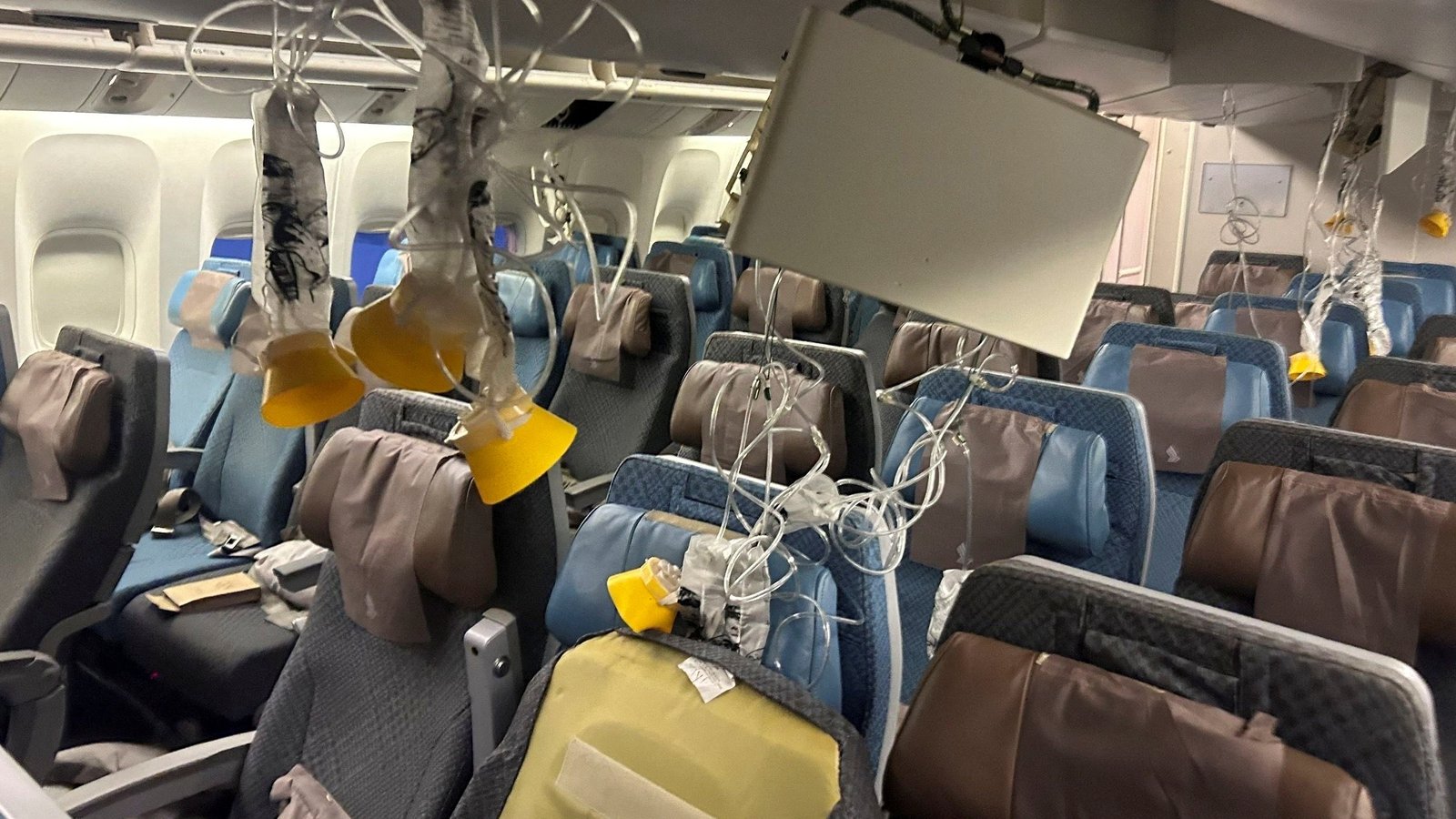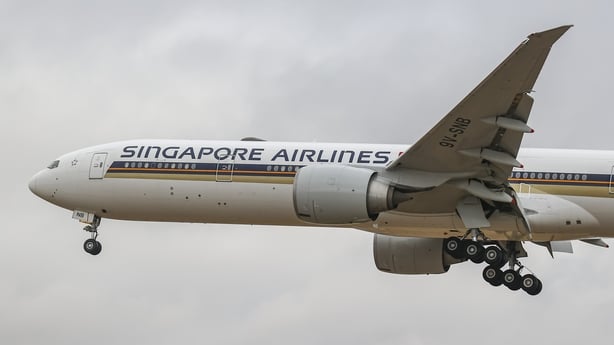Harm caused by G-force change on Singapore flight

Preliminary findings released of an investigation into a Singapore Airlines flight hit by severe turbulence last week showed that a rapid change in gravitational force and a 54-metre altitude drop caused injuries.
A 73-year-old passenger died of a suspected heart attack and dozens were injured after flight SQ321, flying from London to Singapore, encountered what the airline described as sudden, extreme turbulence while flying over Myanmar.
The 21 May flight on a Boeing 777-300ER plane carrying 211 passengers and 18 crew diverted to Bangkok for an emergency landing after the plane was buffeted by turbulence that flung passengers and crew around the cabin, causing some to hit the ceiling.
The Department of Foreign Affairs had confirmed that four Irish citizens were on the flight at the time of the incident.
“The aircraft experienced a rapid change in G (gravitational force) … This likely resulted in the occupants who were not belted up to become airborne,” the Singapore Transport Ministry said in a statement.
“The vertical acceleration changed from negative 1.5G to positive 1.5G within four seconds. This likely resulted in the occupants who were airborne to fall back down,” it said, citing information extracted from the flight data and cockpit voice recorders.
It added: “The rapid changes in G over the 4.6 seconds duration resulted in an altitude drop of 54m, from 37,362 ft to 37,184 ft.
“This sequence of events likely caused the injuries to the crew and passengers.”

Passengers described scenes of chaos in the minutes after the incident, with the turbulence throwing people upwards then into the aisle, many left with bleeding and head wounds.
Photographs of the cabin showed damage to the overhead cabin panels, oxygen masks and panels hanging from the ceiling, and luggage strewn around.
A passenger said some people’s heads had struck lights above the seats and broken the panels.
Singapore Airlines said it acknowledged the report and was cooperating fully with the investigation.
The airline had said yesterday that 42 people who were onboard the flight were still in Bangkok, including 26 passengers receiving medical treatment in hospital.
Among those initially hospitalised were patients with spinal cord injuries and some with brain and head injuries, according to Thai medical officials.
The preliminary report said that upon the flight encountering slight vibrations there was an uncommanded increase in altitude, resulting in the autopilot pitching the aircraft downwards.
The pilots experienced an increase in airspeed and responded by applying speed brakes.
“While managing the airspeed … it was heard that a pilot called out that the fasten seat belt sign had been switched on,” it said.
Hong Kong’s Greater Bay Airlines said it would require passengers to fasten their seatbelts at all times during the flight even when the seat belt sign is off, starting from tomorrow.
The company said it is not a mandatory requirement but a precautionary measure for passenger safety.
The investigation team comprised Singaporean investigators and US representatives from Boeing, the National Transportation Safety Board and the Federal Aviation Administration.
The Singapore transport ministry said the probe was ongoing.





